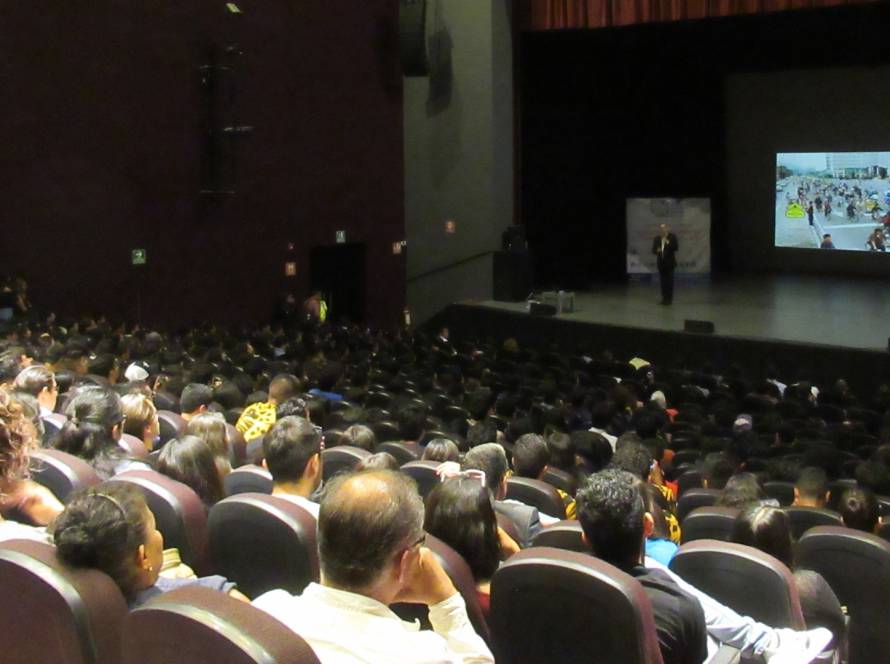Key Takeaways
⇢ Children’s needs are routinely overlooked in city planning. Over 1 billion kids live in
cities ill‑suited to their size, abilities, and developmental needs.
⇢ Four essential dimensions of the urban realm for early years include healthy,
protective, stimulating/playful, and supportive/knowledge‑sharing environments.
⇢ City‑wide benefits of child‑friendly design:
– Health & well‑being
– Social cohesion
– Local economy
– Safety
– Climate resilience
– Nature connection
– Child empowerment
⇢ Measures that improve climate resilience also expand children’s everyday freedom
and their ability to interact with the rest of the community.
⇢ Enhancing children’s connection to nature helps create a more sustainable
environment, including physical and mental benefits.
Summary
a. Five common challenges impacting children’s development include:
○ Traffic & air pollution endangering small, inexperienced pedestrians.
○ Sprawl & car dependency limiting walking and play.
○ Perceived crime & safety fears curbing children’s independent mobility.
○ Unequal access to nature and play facilities.
○ Inadequate family‑support services and uneven distribution of
early‑years care.
b. Proximity of Care Design Guide
○ Distills ten guiding principles into an urban planning checklist to help
planners, developers, and community groups embed child-centred
thinking in housing, streets, parks, and services.
○ Framework for assessing how urban systems influence early childhood
development:
– Health: healthy and enriching environment
– Protection: safe and secure environment
– Stimulation: nurturing and stimulating environment
– Support: knowledgeable and supportive governance
○ Pilot projects demonstrate the guide’s adaptability:
– Chile: Valdivia Neighborhood of Care—upgraded play, walking,
and cycling links around childcare. Designers and caregivers
reimagined a traffic‑choked route by adding
play‑and‑pedestrian networks around a childcare hub, boosting
safety and social cohesion.
– Uruguay: Sensing the City—a public‑space toolkit for deaf‑child
inclusion. The public‑space “language” toolkit was co‑designed
with deaf children to enable inclusive interaction and spark
intergenerational solidarity.
– Brazil: Feel Free to Breastfeed—urban design for behaviour
change. A Favela plaza was retrofitted into a welcoming,
multifunctional space that normalizes breastfeeding and serves as
a family gathering spot.
c. Best Practices:
○ Barcelona’s ‘Superblocks’ are designed with a focus on health and well-
being. They boost physical activity and lower stress for people of all ages.
○ Santiago’s ‘Bicentennial Children’s Park’ knits together wealthy and
low‑income neighbourhoods through a linear park consisting of
accessible walkways.
○ The regeneration of King’s Cross (London) revitalized retail and mixed-
use spaces into public spaces and integrated them with weekend
initiatives for children and families.
○ South Korea’s ‘Safe Routes to School’ drastically cut child traffic injuries.
○ Copenhagen’s storm‑water plazas double as play and gathering spaces
on sunny days.
○ Qian’an City (China)’s Sanlihe River Ecological Corridor is part of
children’s daily commute. It provides exposure to nature and improves
mental health. Initially a 13-kilometre polluted stretch, it has been
transformed into a resilient and ecologically rich landscape.
○ Tirana’s Council’s approach to embedding young voices in municipal
decision‑making by giving them the space to express their needs.
d. How do we bring play in cities?
○ Create places where people can play, learn, and thrive regardless of their
gender, age, and ability.
○ Go beyond playgrounds by creating a network of play spaces across the
city.
How can Cities apply these learnings / findings?
a. Establish a Children’s Council or Youth Advisory Panel with formal input into
planning processes:
○ Audit child‑friendliness in cities – map traffic risks, service gaps, and
play/nature desserts.
○ Include vulnerable groups, such as children from informal settlements,
refugees, disabled groups, etc., in workshops and co-creation activities.
b. Pilot low‑traffic areas around schools or neighbourhoods, including installing curb
extensions, raised crosswalks, and traffic calming on school access streets.
c. Use environmental cues (seating, shade, signage) that invite play, rest, and social
interaction.
d. Neighbourhood care clusters: map childcare centers and senior facilities, then
improve adjacent sidewalks, crossings, and play spots.
Interesting resources
a. Proximity of Care Design Guide by Arup and Van Leer Foundation.
https://www.proximityofcare.com/knowledge-hub/
b. Reclaiming Play in Cities by ARUP. https://www.arup.com/insights/reclaiming-play-
in-cities/
c. Playful Cities design guide: play for anyone, anywhere by ARUP.
https://www.arup.com/insights/playful-cities-design-guide-play-for-anyone-
anywhere/
d. Nature Based Play: Fostering Children's Wellbeing and Climate Resilience by
ARUP. https://www.arup.com/insights/nature-based-play/
Ideas for further reading / research
a. Happy City – Book by Charles Montgomery
b. Tactical Urbanism: Short‑term Action, Long‑term Change – Book by Anthony
Garcia and Mike Lydon


